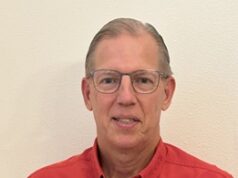 If your hotel advertised that it is so green that it no longer uses cleaning chemicals at all to clean guestrooms, do you think potential guests would make reservations years in advance? Not care if cleaning chemicals, green or otherwise, are used or not? Not even consider making a reservation in your hotel property?
If your hotel advertised that it is so green that it no longer uses cleaning chemicals at all to clean guestrooms, do you think potential guests would make reservations years in advance? Not care if cleaning chemicals, green or otherwise, are used or not? Not even consider making a reservation in your hotel property?
If your answer is the last—not even consider making a reservation in your hotel—you are probably not alone. The concept of chemical free cleaning, as it is called, is still very new; however, don’t be surprised if it becomes more and more common and prevalent in years to come.
So, what is chemical free cleaning? It can have slightly different meanings depending on who is defining it. But, it essentially refers to cleaning methods, procedures, or systems that leave surfaces looking clean as well as removing or eliminating germs and bacteria on surfaces to an acceptable level, comparable to what can be accomplished using traditional or green cleaning chemicals, without the use of any cleaning chemicals.
This would make chemical free cleaning the greenest of cleaning because it goes beyond just reducing cleaning’s impact on the environment. It essentially eliminates cleaning’s impact on the environment. It is because of this, and the efforts of some property managers, housekeepers, and cleaning professionals to further minimize cleaning’s impact on the users of cleaning products that we need to pay attention to this burgeoning new direction in professional cleaning.
Chemical Free Cleaning Products
Are there systems or procedures already available that qualify as chemical free cleaning products? The answer is yes. Among them are the following:
Steam vapor systems. It appears this type of equipment is getting a new lease on life as a result of the increased attention on chemical free cleaning. We are referring to systems that generate approximately 250 degrees (F) of steam; this is enough heat to kill many forms of microorganisms, emulsify grease and oil, as well as melt away soils on surfaces. Typically, these systems, which require no chemicals whatsoever, are now used in commercial kitchens, locker rooms, and on gym equipment as well as for such tasks as grout cleaning.
Spray-and-vac cleaning systems. View these systems as indoor pressure washers; they apply high pressure water to surfaces, removing soils and contaminants, which are then vacuumed up. While they were originally designed for use with chemicals, they are proving surprisingly effective in some situations without the use of cleaning chemicals.
Activated or electrolyzed water systems. These systems are also not new but much more focus has been put on them as a result of emerging interest in chemical free cleaning. While they are not the same, what they share in common is that they use small amounts of electricity to turn water into a cleaning agent.
Dry ice blasting. Dry ice blasting is used to clean areas where wet cleaning may be problematic, such as in bakeries to remove carbon from racks and pans, ovens, or walls and floors in commercial kitchens.
But, Is It Really Clean?
Now we have a general understanding of what chemical free cleaning is all about as well as three different systems that are part of the chemical free cleaning arsenal. For argument’s sake, let’s go ahead and assume these systems are effective as to improving the appearance of surfaces. The big question, of course, is does this equipment really eliminate germs, bacteria, and other contaminants to satisfactory and safe levels? We are not necessarily asking that the surfaces meet levels of disinfection cleanliness, similar to what would be accomplished using an EPA-registered disinfectant. (see No. 1 reference below.) What we would like to see instead is levels of cleanliness closer to sanitary levels, a slightly lower threshold but essentially the same goal using many cleaning chemicals.
Because chemical free cleaning is still relatively new, there are not a lot of scientific tests and evaluations that we can turn to. However, some of the most extensive tests have been conducted by Vince Elliott, a leading advocate of chemical free cleaning. Elliott is President and CEO of The Chemical Free Cleaning Network, Baltimore, Md., and author of the book “Extreme Green Cleaning.” In one ongoing study, he analyzed 760 surfaces in a high-traffic facility to compare and contrast the efficacy of popular water-activated sanitizing products. He used ATP systems to evaluate how much ATP was left on surfaces after cleaning with these chemical free products. High levels of ATP can indicate that potentially unhealthy microorganisms are on a surface. (See No. 2 reference below.)
Based on these tests, Elliott claims there was an effective rate of 71 to 85 percent. This means that in as many as 85 percent of the surfaces tested, satisfactory levels of cleaning were attained to protect the health of building users without the use of chemicals. We should also note that some manufacturers of chemical free products report Elliott’s findings are too low. Some of these companies report that some chemical free cleaning tools and products produce a 99 percent effectiveness level at removing common germs on surfaces.
A Practice Not to Be Ignored
Granted, the final decision may still be pending regarding chemical free cleaning. What we do know is that in some situations, with certain products, and on some surfaces, the use of no cleaning chemicals whatsoever is effective, has no impact on the environment, and can prove to be a major cost savings for hotel owners, making chemical free cleaning something we simply cannot ignore.
Stephen P. Ashkin is President of a consulting firm specializing in greening the cleaning industry and CEO of Sustainability Dashboard Tools, which offers a cloud-based dashboard that allows organizations to measure, report, and improve their sustainability efforts. He is also coauthor of both “The Business of Green Cleaning” and “Green Cleaning for Dummies.”
1) An EPA-registered disinfectant is a disinfectant registered by the U.S. Environmental Protection Agency that has, among other things, been proven effective against the pathogens listed on the product’s label.
2) Adenosine triphosphate (ATP) bioluminescence is produced by all living things. Microscopic amounts of bacteria and pathogens found on surfaces may contain hundreds, if not thousands, of ATP molecules. Although the presence of ATP on a surface does not necessarily mean it harbors disease-causing pathogens, it serves as a warning that they may be present.







